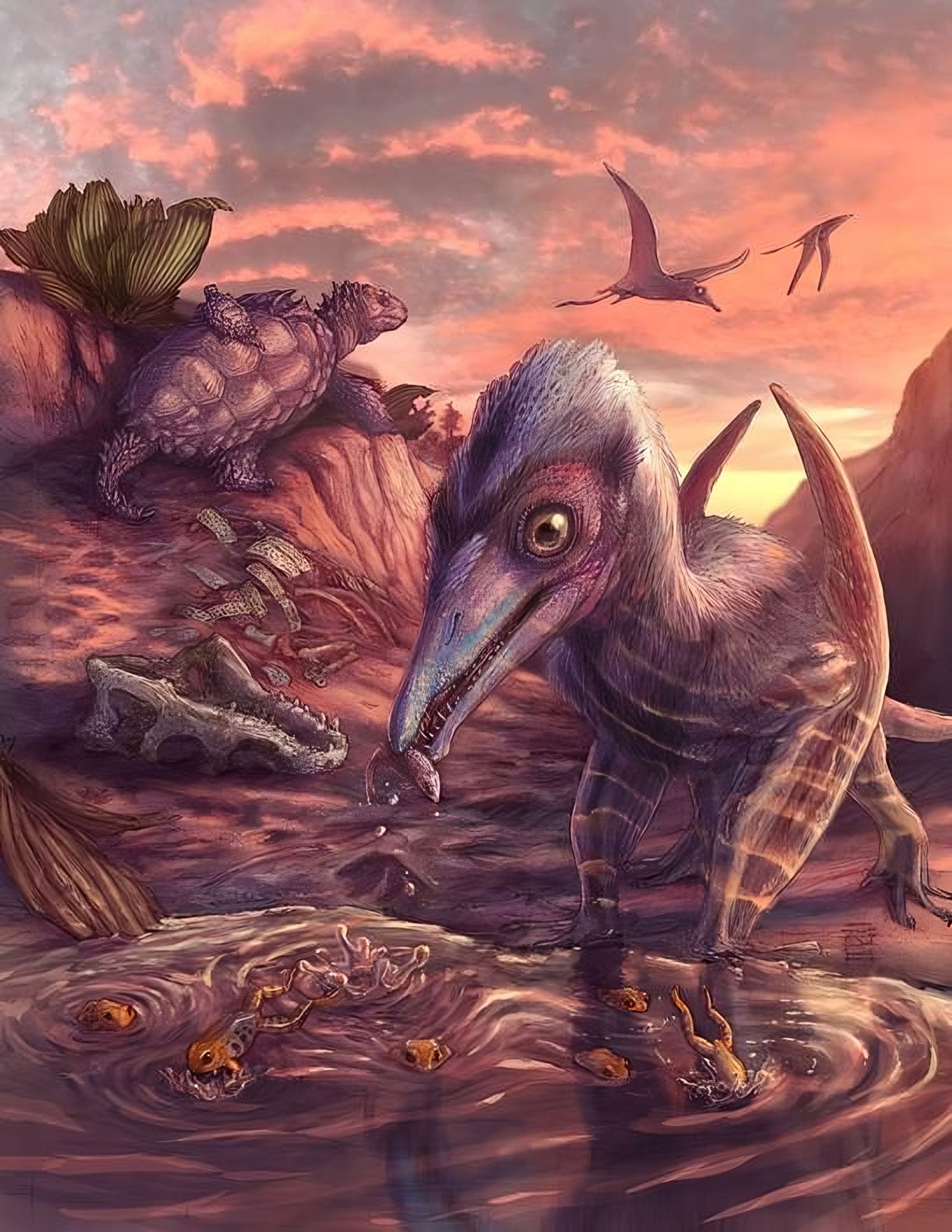🦅 Discovery of a very ancient pterosaur species, so small it could perch on your shoulder
Published by Cédric,
Article author: Cédric DEPOND
Source: Proceedings of the National Academy of Sciences
Other Languages: FR, DE, ES, PT
Article author: Cédric DEPOND
Source: Proceedings of the National Academy of Sciences
Other Languages: FR, DE, ES, PT
Follow us on Google News (click on ☆)
This major discovery, published in PNAS, reveals an unsuspected biodiversity just before the mass extinction of the period. The new pterosaur, about the size of a seagull, coexisted with both archaic species doomed to disappear and groups destined to dominate the following era, such as primitive turtles.

Artist's reconstruction of the fossilized landscape, plants, and animals preserved in an isolated bone deposit in Petrified Forest National Park, Arizona.
Illustration by Brian Engh.
A pterosaur among giants
The pterosaur, named Eotephradactylus mcintireae, was about the size of a seagull. Its worn teeth indicate a diet of fish, which were abundant in the rivers of the time. This small flying reptile shared its habitat with giant amphibians and armored reptiles, now extinct.
The discovery of its jaw, accidental, was made by a Smithsonian museum volunteer. Sediments rich in volcanic ash allowed for precise dating of the site. These exceptional conditions also preserved fragile fossils, such as those of primitive turtles.
An ecosystem on the brink
The fossil deposit documents a diverse animal community, including 16 groups of vertebrates. Among them were crocodile-like predators and fish with armored scales. These species disappeared during the Triassic extinction, 201 million years ago.
Researchers emphasize the importance of this site for understanding ecosystem dynamics before a major crisis. The newly identified species, like this pterosaur, show early adaptation to ecological niches that would later flourish.